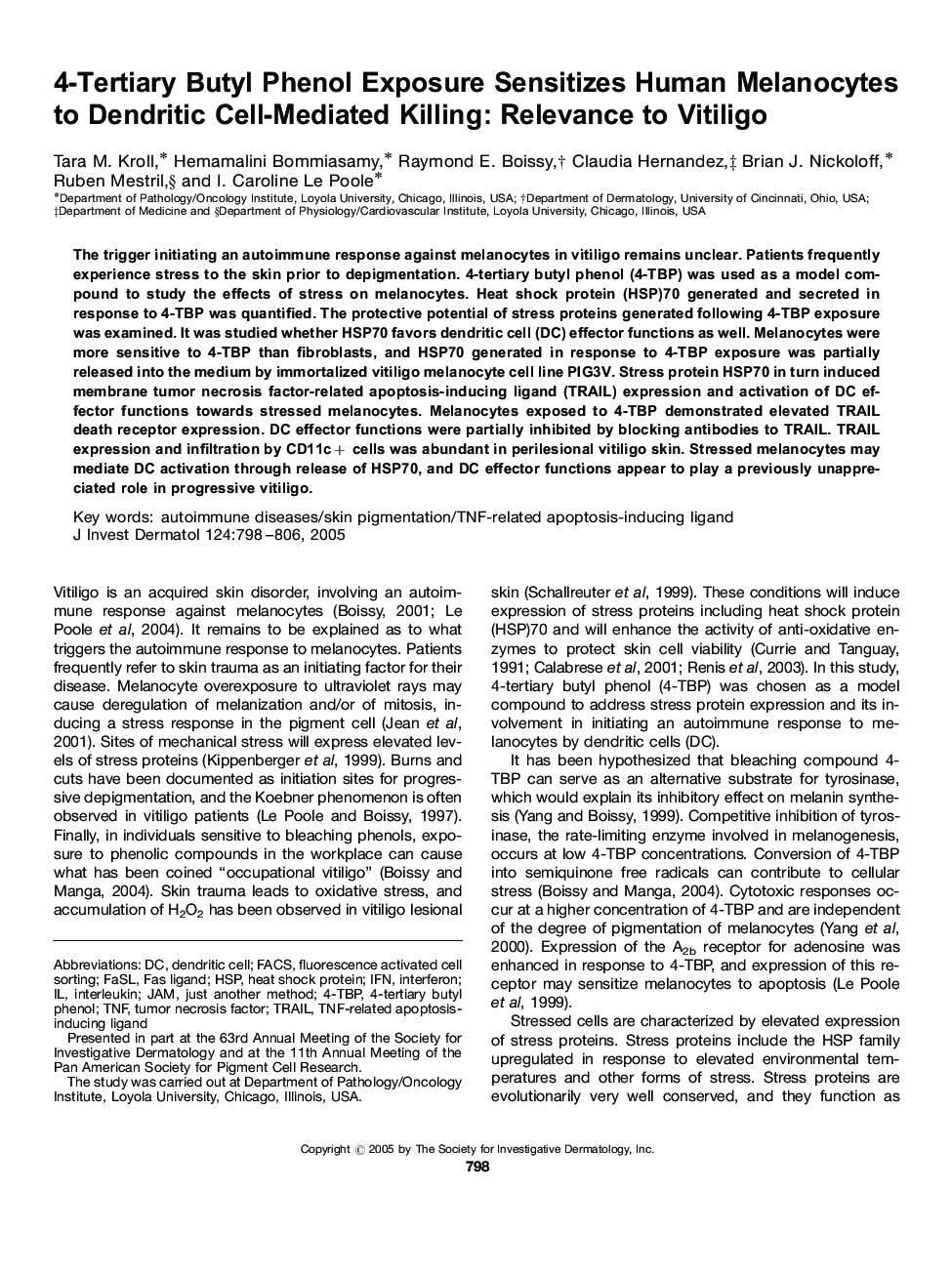| Article ID | Journal | Published Year | Pages | File Type |
|---|---|---|---|---|
| 9230351 | Journal of Investigative Dermatology | 2005 | 9 Pages |
Abstract
The trigger initiating an autoimmune response against melanocytes in vitiligo remains unclear. Patients frequently experience stress to the skin prior to depigmentation. 4-tertiary butyl phenol (4-TBP) was used as a model compound to study the effects of stress on melanocytes. Heat shock protein (HSP)70 generated and secreted in response to 4-TBP was quantified. The protective potential of stress proteins generated following 4-TBP exposure was examined. It was studied whether HSP70 favors dendritic cell (DC) effector functions as well. Melanocytes were more sensitive to 4-TBP than fibroblasts, and HSP70 generated in response to 4-TBP exposure was partially released into the medium by immortalized vitiligo melanocyte cell line PIG3V. Stress protein HSP70 in turn induced membrane tumor necrosis factor-related apoptosis-inducing ligand (TRAIL) expression and activation of DC effector functions towards stressed melanocytes. Melanocytes exposed to 4-TBP demonstrated elevated TRAIL death receptor expression. DC effector functions were partially inhibited by blocking antibodies to TRAIL. TRAIL expression and infiltration by CD11c+ cells was abundant in perilesional vitiligo skin. Stressed melanocytes may mediate DC activation through release of HSP70, and DC effector functions appear to play a previously unappreciated role in progressive vitiligo.
Related Topics
Health Sciences
Medicine and Dentistry
Dermatology
Authors
Tara M. Kroll, Hemamalini Bommiasamy, Raymond E. Boissy, Claudia Hernandez, Brian J. Nickoloff, Ruben Mestril, I. Caroline Le Poole,
